Asia Contemporary Art Market
Over the last few decades, Asia has seen the emergence of a thriving art scene that was relatively unknown in Europe. Asian contemporary art, long absent from the international art market, has developed in conjunction with these countries' economic growth. Understanding the main components of the art scene in East and South-East Asia informs us about the history, influences and development of these countries, and sheds light on their integration into the global culture towards which we are moving.
ASIAN CONTEMPORARY MARKET TRENDS
Hiroka Yamashita
Kiang Malingue gallery NY
Reasons for optimism on the Asian art market in 2025
Despite ongoing economic uncertainties and heightened geopolitical challenges, the first half of 2025 has been eventful for Asian art markets, with new players, initiatives, and trends emerging across the region. The down market has continued, but there are reasons for optimism. In Basel and Zurich last month, several Asian collectors in their 30s or younger who were attending the fair week for the first time—some visiting from places like mainland China, Taiwan, and South Korea, some from elsewhere in Europe. South Asian art has been having a banner year, at auction and in institutional spaces, and West Asia is on the rise, thanks to an expanded leadership team at Art Dubai, Sotheby’s inaugural sale in Saudi Arabia and Art Basel’s plan to launch a new Qatar Fair in Dubai.
Asian galleries are expanding to Western art capitals, and Western galleries are picking up Asian talent. Hong Kong’s Kiang Malingue and Seoul’s gallery Kiwa have opened outposts in New York and London, respectively. Anna Park, 27 years old, from Korea, has become the youngest artist to join Lehmann Maupin.
However, demand at auction for Asian artists born after 1990 hit a three-year low in 2024, with just $9.7 million of their art selling, according to Artnet analytics.
Source : Artnet News, Vivienne Chow, 3 July 2025
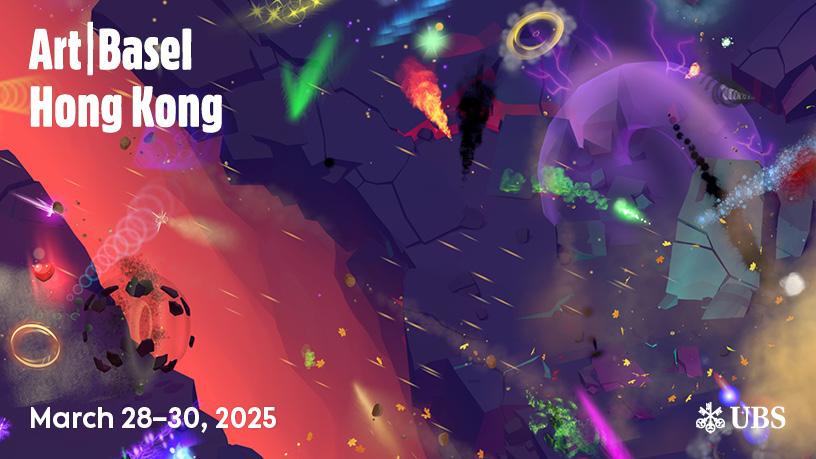
Art Basel Hong Kong: steady results
Art Basel Hong Kong (2025) is doing well, headlined Le Journal des Arts. 242 galleries were present, and nine sales exceeded the million-dollar mark, led by a work by Yayoi Kusama (Infinity-Nets, 2013), sold for US$3.6m (approx. €3.3m) by David Zwirner Gallery. Hauser & Wirth also sold a canvas by Zeng Fanzhi for US$1.5m (approx. €1.4m). Perrotin sold a work by Takashi Murakami (2025) for US$1.35 million (approx. €1.25 million). Above US$100,000 (€92,500), only a third were Asian artists. Alongside Yayoi Kusama, Asian women artists were also highly rated: Chinese (Yin Xiuzhen, Xiang Jing, Stella Zhong), Korean (Lee Bul, Anicka Yi, Lee ShinJa), as well as Filipino (Pacita Abad) and Thai (Pinaree Sapitak). Below the US$100,000 mark, sales by Asian artists were more numerous. This was partly due to a wide price range, with works priced between US$1,000 and US$10,000 (€925 and €9,250), attracting a younger generation of collectors, who are steadily growing in the region. In addition to Chinese and Hong Kong collectors, the presence of Koreans and Japanese remained strong, followed by a breakthrough by Southeast Asian collectors, particularly Filipinos. In addition to paintings, this year's stands featured a large number of textile, ceramic, paper and digital creations.
Source: Le Journal des Arts, Rémy Jarry, April 1, 2025
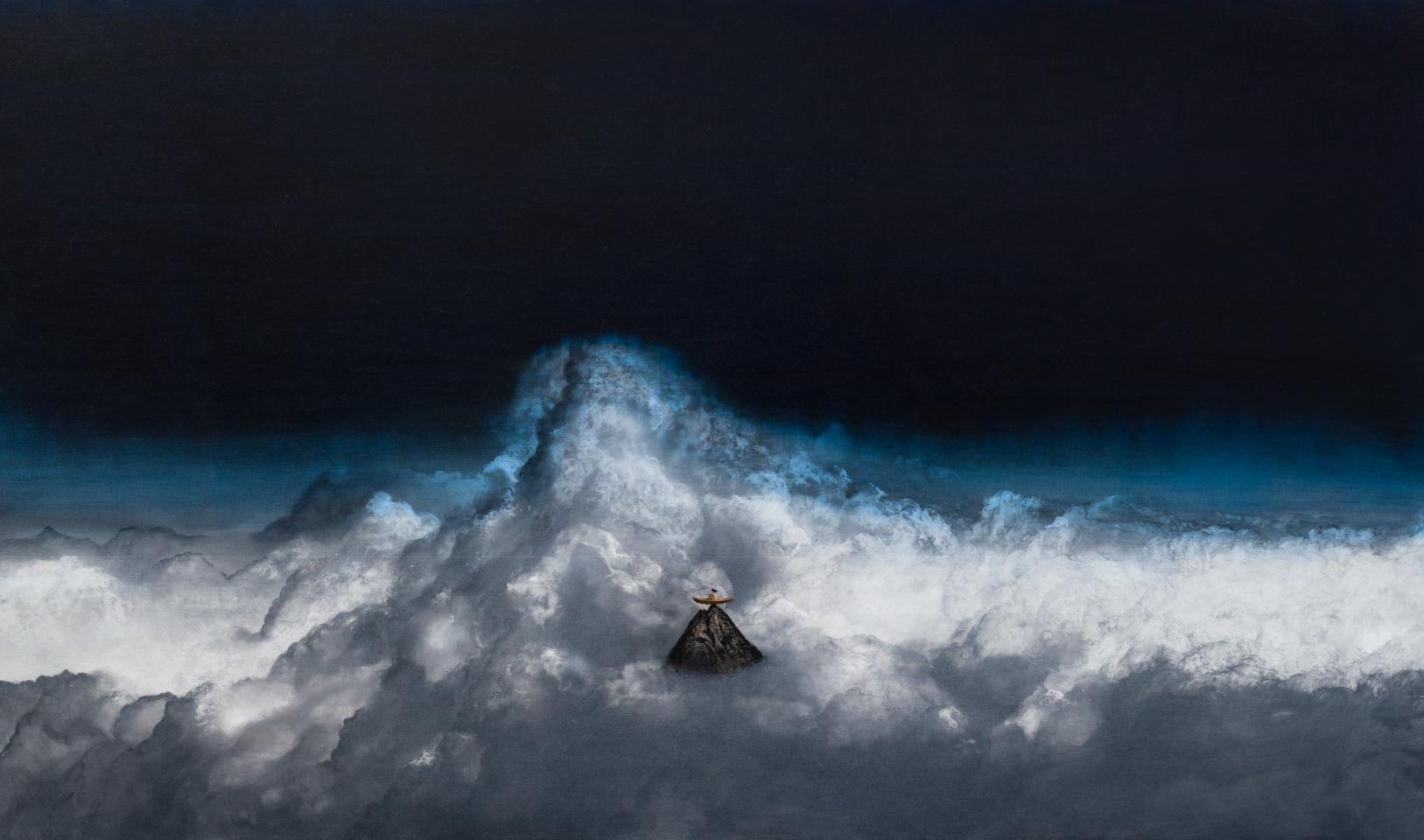
Shiori Eda
The Japanese art market: still very national
According to a new report, published in December 2024 by the Japan Agency for Cultural Affairs and economist Clare McAndrew, the Japanese art market grew in value by 11% between 2019 and 2023 - to an estimated $681m - outperforming the global average of 1% and the more established art markets in the USA and UK. Although major Japanese galleries are increasingly present at international art fairs, domestic sales continue to dominate, with 84% of sales to local collectors. The report shows that collectors generally prefer to buy through dealers, followed by art fairs and auction houses. Galleries and dealers accounted for 68% of total sales, with the majority in Tokyo and the Kanto region. Gallery sales accounted for 74% of purchases, compared with 44% worldwide. Art fairs accounted for 10% of total sales, around a third of the global average. Online sales, which generally attract younger buyers, accounted for only 5% in Japan, compared with 20% of art sales worldwide.
Sources: The ArtNewspaper, January 2025, Ocula December 2024
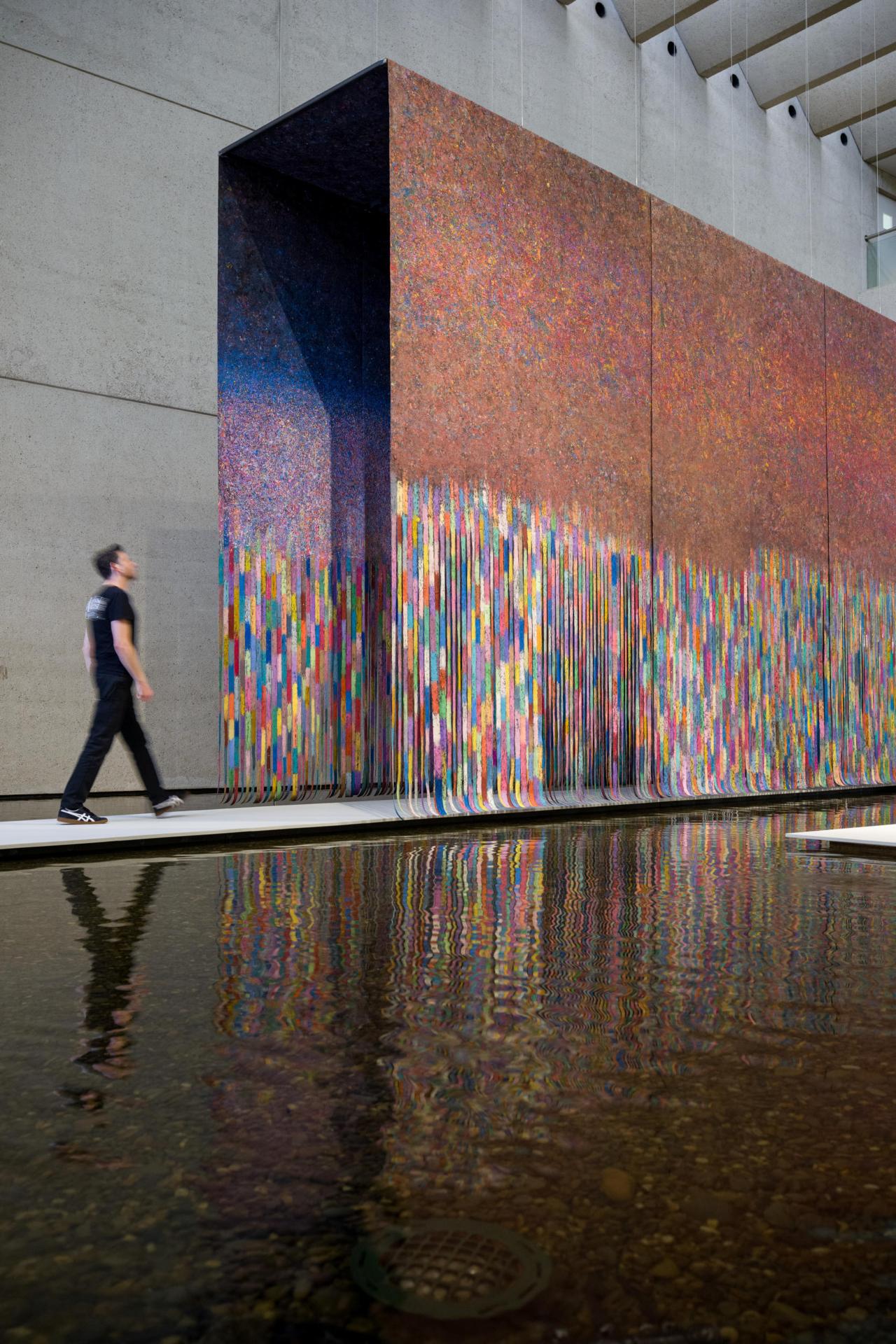
Creativity at the 11th Asia Pacific Triennial in Brisbane
The 11th Asia Pacific Triennial in Brisbane, Australia - November 30, 2024-April 27, 2025 - brings together 70 artists, collectives and projects from over 30 countries. This year's show features an original scenography, based primarily on “an aesthetic of suspension and sprawl”, as reported by Rémy Jarry, Asia correspondent for Le Journal des Arts. Floors and ceilings are favored over walls. In the atrium of the Queensland Art Gallery & Gallery of Modern Art (Qagoma), for example, we can see a monumental suspended installation by Thai artist Mit Jai Inn, made of long, thin strips of oil-painted canvas in pastel colors. Cambodian artist Yim Maline's organic, biomorphic textile works, made from recycled materials, are suspended or spread horizontally. In her video “Shuttle”, Thai artist Kawita Vatanajyankur uses her own body as a loom shuttle. “Like Yim Maline, she denounces the devastating effects of the textile industry on the environment and on the human condition, particularly women's work. The floors of the Qagoma are also invested. New Zealander Brett Graham has designed a long carpet on which visitors can stroll. Magnificent, imposing ceramics by Vietnamese artist Bùi Công Khánh are also shown behind large glas panels. The Triennal is proving to be an excellent showcase for the rapid development of artistic expression in Australia, Asia and the Pacific regions.
Source: Le Journal des Arts, January 31, 2025
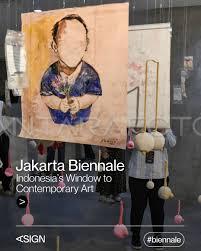
Hong Kong is no longer the only gateway to Asia
The shift in Asia is undeniable, explains Adeline Ooi, Art Basel's former head of Asia. Before the pandemic, if you weren't present in Hong Kong, you weren't really present in Asia. Hong Kong was widely regarded as the gateway to the region, the place where you could establish a base before branching out. At the time, discussions of “Asia” often focused on China, then in the throes of an economic boom. Today, galleries have a wider range of options. Adeline Ooi continues: when I took over as Art Basel's Asia director in 2014, the ambition was to foster growth and ensure that Asia was taken into consideration on the world stage. Today, the region's cities are excelling - from Bangkok to Manila, Hong Kong, Singapore, Shanghai,Tokyo, Mumbai, Jakarta to Ho Chi Minh City - whether through art festivals, art fairs or biennales. Some regions, such as India, have experienced remarkable growth in recent years. Take the Mumbai Gallery Weekend, for example. Thailand's art scene is gaining momentum, with initiatives such as the Bangkok Art Biennale, the recently opened Bangkok Kunsthalle, Khao Yai Art Forest, and the forthcoming Thailand Biennale in Phuket as well as Ghost 2568 in November. Asia is ready to develop its own new models, and collaborations between regional galleries are particularly interesting. Price remains a major issue for Asian galleries and artists venturing abroad. Artworks deemed expensive locally may be considered affordable in Western markets, prompting dealers to raise prices. However, this can alienate regular buyers in their own countries. These issues require ongoing dialogue.
Source: Artnet Bews, January 15, 2025
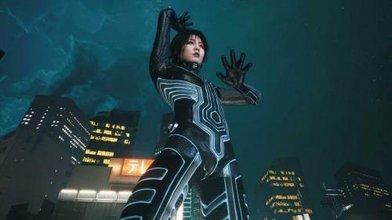
At Pompidou, young Chinese artists master digital art
The Centre Pompidou in Paris, in partnership with the West Bund Museum Project in Shanghai, offers a fascinating look at China's young contemporary artists. “China, a new generation of artists” exhibition features the work of 21 artists born between the late 1970s and early 1990s. The selected artists represent a wide range of practices - video, painting, sculpture, installation, photography. From Qiu Xiaofei to Cui Jie, Chen Fei, Sun Xun and Lu Yang, these artists reflect the evolution of Chinese society. In “Road to the Success”, artist Chen Fei portrays himself as a famous brand designer, reflecting an image of success. He explores the paradoxical and complex nature of modern society in a context of globalization and urban development. The artist creates highly graphic works, conceived as film images. In his paintings, Cui Jie composes superimposed images. Each superimposition represents the transformation of China's urban landscape through time and politics. Cui Jie is one of the most innovative young artists to have emerged in China in recent years, and one of the most important exponents of post-digital art. Animated film director Sun Xun presents a screen in ink and gold leaves, produced for his film Magic of Atlas (2024), recounting a boy's quest for identity across imaginary lands and diverse temporalities. Tokyo-based Chinese artist Lu Yang is one of the most celebrated artists of his generation. Here, he is presenting a captivating immersive video installation - DOKU The Self (2022) - and a demonstration of his mastery of digital art. Doku represents the artist's alter ego, allowing him to reincarnate in a fantastical digital mode. Lu Yang projects us into a world of cyborgs, Buddhist deities and transhumanism. “Since childhood, my perception of reality has been limited. My grandmother was a Buddhist. She put me in touch with a special kind of wisdom,” explains Lu Yang. Another immersive video “DOKU - The Flow” by Lu Yang was shown at Fondation Vuitton in Paris in spring 2024. The exhibition “China, a new generation of artists” is on show at the Centre Pompidou Paris, from October 9, 2024 to February 3, 2025.
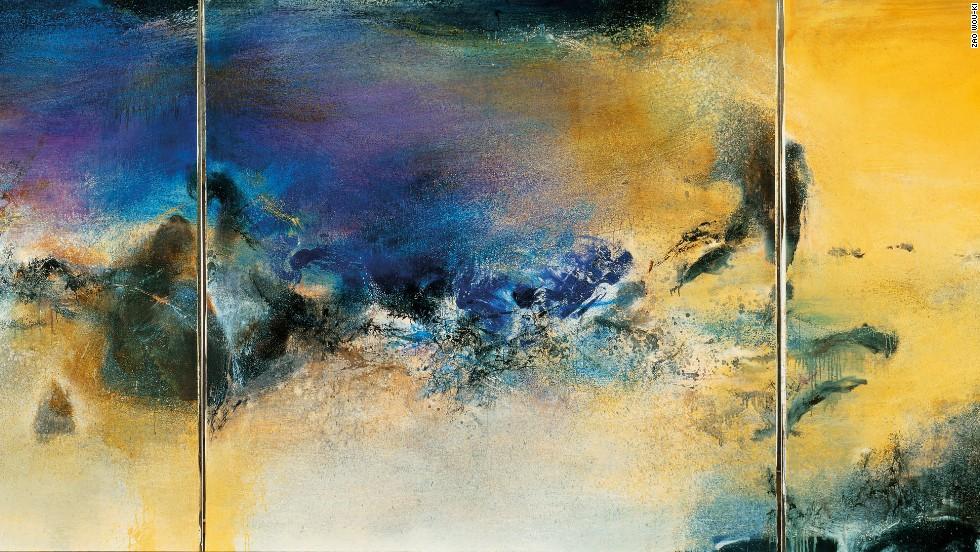
Zao Wou-Ki: color, light and flamboyance of abstraction
Zao Wou-Ki is one of China's most celebrated artists. 200 works, including 129 oil paintings, were on show at the Chinese Academy of Art in Hangzhou which presented a major exhibition commemorating the centenary of Zao Wou-Ki (dead in 2013), from September 20, 2023 to February 20, 2024. The Jiushi Art Museum in Shanghai presented Zao Wou-Ki's “Echoes of Verses: The Poetic Palimpsests” from June 29 to October 13, 2024: over 80 etchings by the artist from the 1950s to the early 2000s, in connection with poets such as Henri Michaux, René Char and Claude Roy.
In France, from March 2 to May 26, 2024, the Franciscaines convent in Deauville hosted an exceptional monographic exhibition dedicated to the work of Zao Wou-Ki: “les allées d'un autre monde”. In 2018, the Musée d'Art Moderne de la Ville de Paris had already devoted a major exhibition to him, with some 40 works on show.
Before the opening up of China in the 80s, Zao Wou-Ki's art was not considered by the Chinese: too far from the traditional canons of Chinese painting. Zao Wou-Ki left China in 1948. In 1983, the Chinese Ministry of Culture organized the artist's first exhibition, at the National Museum in Beijing. Today, his works are part of Asian collections. And Zao Wou-Ki holds the record for the highest auction in the history of the Hong Kong market, with $65m for a monumental tryptique entitled “Juin-Octobre 1985”, sold in 2018 at Sotheby's. In the first half of 2021, the Hong Kong market was led by Jean-Michel Basquiat and Zao Wou-Ki, accumulating $192m, or 20% of half-year earnings between them, Artprice reported in 2024. It healined 'Zao Wou-Ki: from rejection to consecration'. Zao Wou-Ki is thus highly sought-after by Western and Chinese collectors, attracted by his works that mix East and West. “Zao Wou-ki had his own approach to Western abstraction. He found a unique style. His initial training in classical Chinese painting is fundamental”, said Joyce Chan, Asian art specialist at Christie's in Hong Kong. Guillaume Mallécot, at Sotheby's in Paris, declared in 2018 that Zao Wou-ki's price had doubled since 2010, particularly since his death.
When Zao Wou-Ki left China for Paris, he wanted to break away from traditional Chinese painting. Abstraction in Paris in the 50s was for him a very free form of painting. Nevertheless, after many years in France, he declared: “Who can understand the energy it took for me to listen to and assimilate lessons from Cézanne and Matisse, and then return to the heritage bequeathed to me by Tang and Song painting, which remains for me the most beautiful in the world? In 1971, he also rediscovered China ink on paper: “It remained an exercise in style, a kind of virtuoso demonstration of which I was wary,” he explained.
Today, Zao Wou-ki is not only recognized but honored by China. His most spectacular canvases are on show in Hong Kong. His reputation - worldwide - extends beyond China to the United States, which has begun to take an interest in his work. The Zao Wou-ki Foundation, chaired by Françoise Marquet-Zao, the artist's wife, protects and promotes the work of this immense artist.
Sources : Artprice 9/2024, Balises, 9/21, Les Echos 6/2018, others
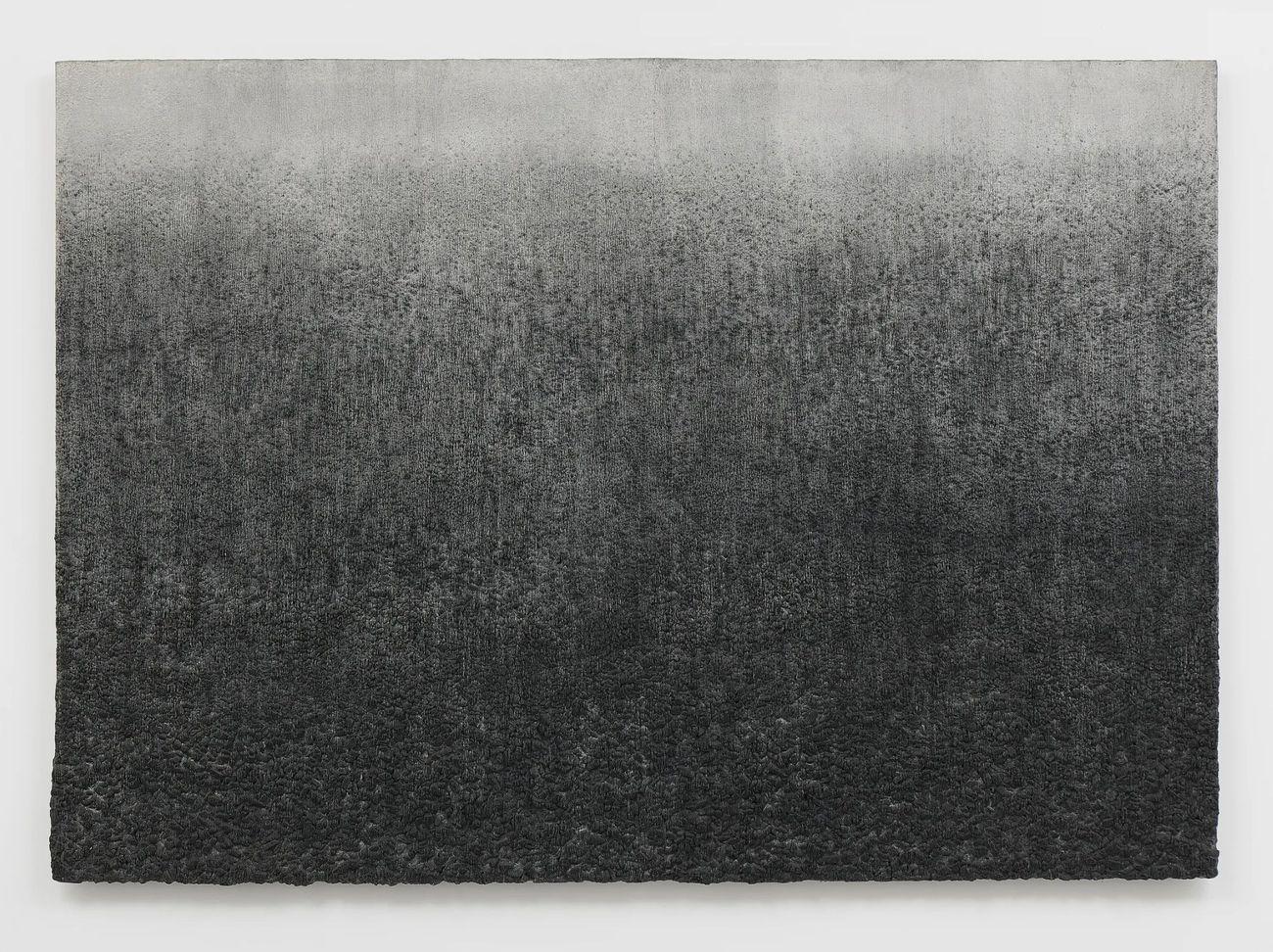 Lee Jin Woo
Lee Jin Woo
An informed view of the Korean art market
As KIAF and Frieze Seoul will open on September 4, 2024, interview by Jung Lee, the head of Seoul-based Gana Art and the vice-chairman of Kiaf Seoul’s operating committee.
During the past few years of the art market boom, we have seen a lot of new collectors coming in. People talk about buying art much more openly. The new generation treats art as an asset class and an investment, such as the NFT fever previously, though they have, of course, slowed down their purchases. Many of these younger collectors are in their early 30s to mid-40s. Some come from the I.T. sector. Others come from old families who own mid-sized rather than major companies. There are collectors who come from the finance world as well, and usually they are in their early 40s to early 50s. They may not come to the gallery or buy works as often as before, but their habits and interests are changing. For example, previously they looked for new, emerging local and international artists. But now, they look for more established artists who have greater recognition artistically and have a more stable market. I found them more serious and thoughtful about what they want. Korean contemporary art has been getting more exposure on the global stage in recent years. It could be just a trend. People from abroad may only be looking at Korean artists because there’s a fair, and Korea happens to be the current focus for those seeking new markets and the next Asian artists, similar to how things unfolded in Hong Kong, mainland China, and, at times, India. But having said that, there is interest in rediscovering Korean artists. I receive a lot of inquiries from overseas galleries or incubators asking about Modern artists.
Source : Artnet News 9/2/2024 and The Asia Pivot
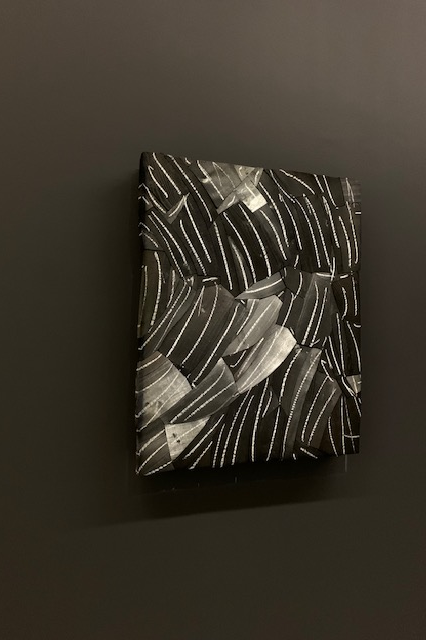
Lee Bae
What is Korean art today?
Seoul is becoming a major art hub, especially since the first Frieze art fair was held in the Korean capital. The influx of international galleries and Frieze Seoul have enabled the South Korean art market to reach KRW1,000 billion ($750.85 million) by 2022, according to figures from the Korean Ministry of Culture, Sports and Tourism. The Korean wave phenomenon has also propelled Korean culture into museums around the world in recent years. In 2024, the state allocated 4.7 billion Korean won ($3.4 million) to organise special exhibitions at major events to promote Korean art worldwide, including 1.7 billion Korean won ($1.2 million) for the 30th anniversary commemorative exhibition of the Korean pavilion at this year's Venice Biennale.
But what is Korean art? According to curator Juli Cho Bailer, Korean artists and collectors have always had a preference for painting. "This is easy to understand with the masters of dansaekhwa, such as Park Seo-Bo and Lee Ufan, who have influenced two generations of artists". However, contemporary artists are increasingly exploring multidisciplinary and digital practices. The emphasis on digital is inescapable in Korean society at large, as a world leader in technological innovation. Korean companies such as Samsung, LG and Hyundai are major supporters of the arts in the country. Some believe that this increased digitisation is leading to a greater homogenisation of art.
Kim Seong-Youn, executive director of the Busan Biennale organising committee, argues that the styles and subjects of Korean artists are closely aligned with global art trends. "Young artists increasingly prefer individualistic and pop creations to a deep commitment to social issues," he explains. Laurencina Farrant-Lee, Artistic Director of the SongEun Art and Cultural Foundation in Seoul, argues that the style and subject matter of South Korean art is distinctive: "The fusion of traditional Korean art and Western influences, catalysed during the post-war era, has propelled a very singular modern and contemporary art movement," she explains. While the South Korean art scene looks set to develop, it faces a number of challenges. Laurencina Farrant-Lee is concerned about the proliferation of "fast-fame" art, stressing "the need to encourage sustainable and meaningful artistic projects.
Source: The Art Newspaper, 19 June 2024
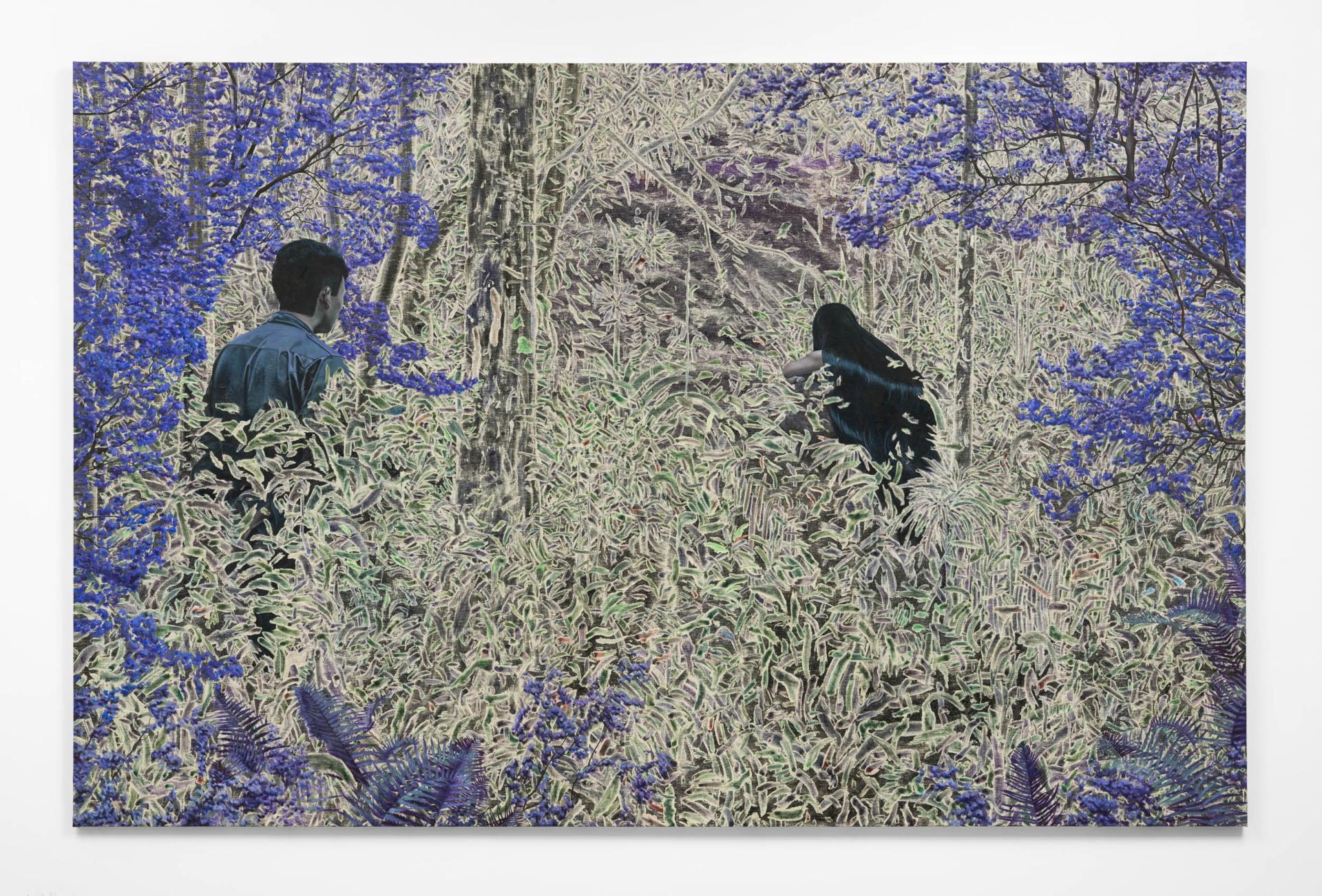 Michael Ho
Michael Ho
The dynamism of young ultra-contemporary Chinese artists
China is the world's second-largest art market, after the U.S. In 2023, it reported sales of $5 billion (according to Artprice). Despite the difficult economic climate in 2023, art market sales in China increased by 9% in quantity, although they fell in value.
Contemporary art was well represented in 2023. ‘Despite a drop in the number of works sold for between ten and one hundred million yuan at art auctions in China, the overall transaction rate increased and the number of works sold for close to one million yuan even exceeded expectations,’ said Artprice. According to a study published by Art Basel and UBS, the market owes its resilience to the new generation of collectors. However, as far as market performance in 2024 is concerned, there are multiple factors clouding the path to continued economic growth, not least the continuing challenges in the property sector. The economic environment for the Chinese art market in 2024 will remain unpredictable.
The market for ultra-contemporary Chinese artists (born after 1980) is particularly buoyant. Chen Fei (b. 1983) is one such ultra-contemporary artist whose reputation is growing. The Artron auction house has recorded no less than 14 works by Chen Fei sold for a total of over $5m. The artist exhibits in prestigious galleries abroad.
At the same time, a new generation of young, wealthy Chinese people are buying up many works by young artists, and are not hesitating to speculate. The German-Chinese artist Michael Ho (b. 1991) is one of these highly sought-after ultra-contemporary artists. The artist, of Chinese descent, grew up in Germany. He fuses the aesthetics of classical Chinese paintings with works based on pre-modern European canons.
As for Hong Kong, which is increasingly becoming a major artistic hub, the city's annual sales topped one and a half billion dollars in 2023, according to Artprice. With the lifting of measures against the COVID pandemic, a surge of energy has been reflected in spring sales. For Christies's, Hong Kong remains a stronghold. Its director recently announced the opening of 4,645m2 for the company in a new tower designed by the architect Zaha Hadid.
Sources: Artprice, Art Basel, Ubs Report, June 2024
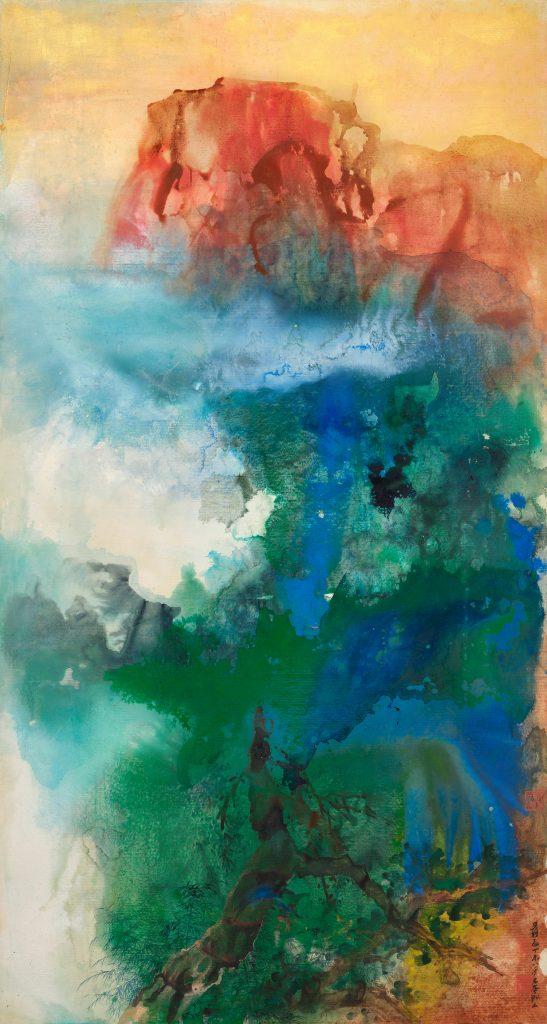
Zhang Daqian: the best-selling Asian artist at auction in 2023
According to Artnet Price Database, Chinese painter Zhang Daqian, who died in 1983, achieved a total sales value of $248 million at auction last year, an increase of almost 38% on the $180.6 million in 2022. Not only was he the best-selling Asian artist in 2023, but he also ranks second in the world after Pablo Picasso, whose total sales value amounted to $595.7 million. This result may come as a surprise to some, especially those who focus on contemporary art.
In recent years, the list of top-selling Asian artists has been dominated by living Japanese artists such as Yayoi Kusama (8th in 2023, $190 million) and Yoshitomo Nara (21st ", $88 million). But Chinese artists born in the late nineteenth or early twentieth century, who are perhaps less familiar to Western audiences, have long fetched high prices, and their works are sold not only in the major auction houses in Hong Kong, but also in local and regional sales in mainland China and parts of Asia.
Zhang Daqian's best-selling work in 2023 was "Pink Lotuses on Gold Screen" (1973), a projection of ink and colour on gold paper on a two-panel screen. It sold for HK$251.6 million ($32 million) at a Sotheby's Hong Kong sale in April 2023. Of the top 100 Zhang Daqian lots sold in 2023, almost half fetched over $1 million, including four that fetched eight figures. The least expensive work on this list, an ink-on-paper scroll entitled "Buddhist Monastery in the Mountains" (pre-March 1958), still sold for the handsome sum of $406,597.
Other names of Asian artists feature among the top 40 artists sold at auction worldwide in 2023. However, none of them is alive. The best-selling living Chinese artist in 2023 was Liu Ye, in 46th place, with a total sales value of $42.3 million.
Extracts. The full article was published on 21 February 2024, in The Asia Pivot, Artnet Pro’s biweekly members-only newsletter providing mission-critical analysis, insights, and exclusive intelligence on developments in Asia’s art markets.
CONTEMPORARY ART MARKET
Rankings

Each year, Artprice draws up an international report on the contemporary art market, as seen through the prism of auction sales. This report is based on an analysis of sales results registered for artists classified as “contemporary” according to their year of birth: here, those born after 1945.This report contains original rankings, such as the Top 500 contemporary artists according to turnover
Artprice The Market of Contemporary and Ultra contemporary Art in 2025
Artprice Art Market in 2023
Artprice The Ultra Contemporary Art Market in 2022
Artprice 2021 Art market report (March 2022)
Ranking of the greatest Contemporary Asian Artists in 2020/2021
ART MARKET/CHINA/INDIA
HURUN ART LIST 2023 Ranking of the Top 100 of Chinese artists
Hurun Report - Info - Hurun China Art List 2023
HURUN INDIA ART LIST 2023 Ranking of Top 50 of Indian artists